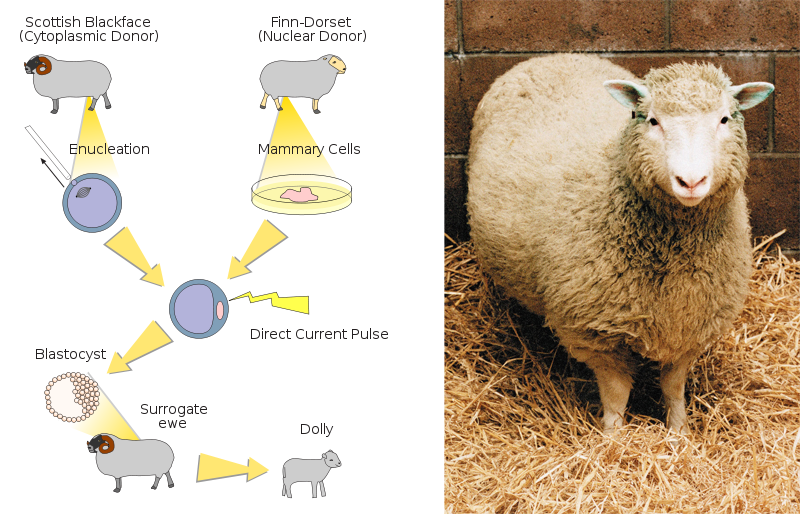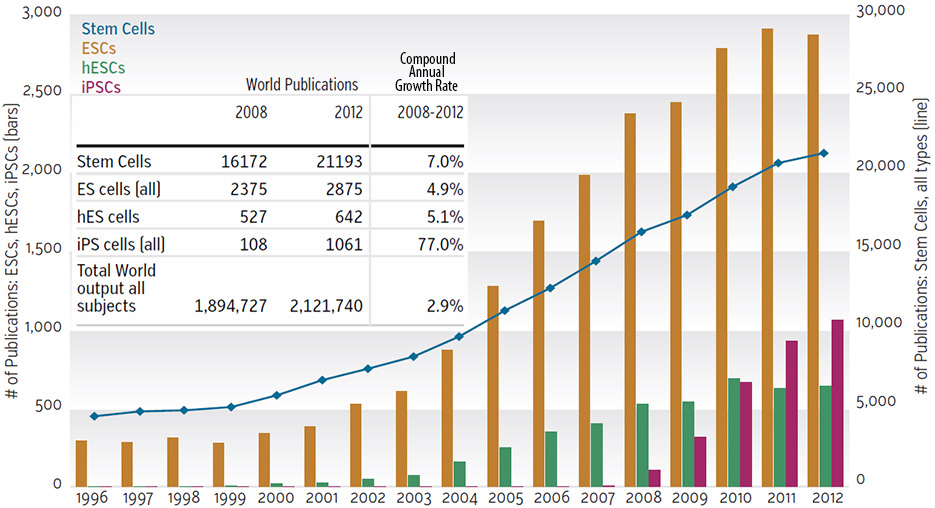Application and case study
Stem Cell Application and case study
The Stem Cells have diverse capabilities, so are used in various fields.
The most well-known stem cell replication in a mammal Dolly was born into the world’s first cloned.
She was cloned and born by Ian Wilmut, Keith Campbell and colleagues at the Roslin Institute, part of the University of Edinburgh, Scotland on July 5,1996.
She was created using the technique of somatic cell nuclear transfer, where the cell nucleus from an adult
cell is transferred into an unfertilized oocyte (developing egg cell) that has had its cell nucleus removed.
On 14 February 2003, Dolly was euthanised because she had a progressive lung disease and severe arthritis.

Source : http://en.wikipedia.org/wiki/
Embryonic stem cells(ESCs) are master cells that can morph into any cell of the body.
But for using ESCs, the cultivation is necessary. This problem involves a lot of controversial issues.
For examples, cancer occurrence, ethical & religious argument.
So, in-vivo clinical trials(study) cases are not much.
And to put into the cells are incubated, FDA(KFDA,MHLW) approvals is needed as a medicine.
(Standards differ from country to country.)Currently a clinical trial for the dry age-related macular degeneration (dry AMD) disease using RPE (retinal pigment epithelial) cell from hESC is going in Phase 2 stage at ACT company in the United States. This clinical in progress announced positive results in interim reports.
※ Dry AMD(dry age-related macular degeneration) : Dry AMD is most common type of macular degeneration and affects 90% of the people who have the condition. In the dry form, there is a breakdown or thinning of the layer of retinal pigment epithelial cells (RPE) in the macula. These RPE cells support the light sensitive photoreceptor cells that are so critical to vision. When we look at something, the photoreceptors (rods and cones) gather the images and send them to the brain, where vision takes place. (reference date : April, 2015)

Use as a regenerative medicine.
Damaged tissues and the function of internal organs are recovered through stem cell transplant.
In the 2000s, competitive research worldwide is currently underway about 3,000 clinical trials.
Cell Therapy Guidelines
The development of cell therapy must be generalized and proved effective as a therapeutic agent through steps such as prior notification, permits, interim report below laws relating to drug dealing at health ministries in the country.(All regulations differ from country to country.)
Stem cells clinical Trials and applications to treat diseases
- Representation is the bone-marrow transplantation for leukemia.
- Plantation of umbilicus blood for leukemia or cerebral palsy.
- Acute myocardial infarction using bone marrow derived stem cells.
- Cancer therapy using immunocytes (This issue talks on other sector…MORE READ)
- Surgeons in Taiwan restored vision to patients with severe eye damage using stem cells from the patient’s own eyes.
- British scientists found that adult stem cells in bone marrow can turn into liver tissue, which can be used in new treatments for liver damage.
- In mice, stem cells from bone marrow have developed into brain cells and heart cells.
- In the UK a three-year-old boy has been cured of a fatal disease by the use of stem cells extracted from his sister’s placenta.

Annual stem cells reports issued trend

Global publication count (1996-2012) and compound annual growth rate (CAGR)(2008-2012) for all stem cells (Stem Cells), ES cells (all organisms; ESCs), hES cells (hESCs), and iPS cells (iPSCs).
Source :
http://singularityhub.com/2010/04/08/cord-blood-stem-cell-treatment-for-cerebral-palsy-in-clinical-trial/
http://www.researchtrends.com/issue-36-march-2014/stem-cell-research/
https://www.amd.org/what-is-macular-degeneration/dry-amd/
Let’s study other references in each stem cell category.




Leave a reply
You must be logged in to post a comment.